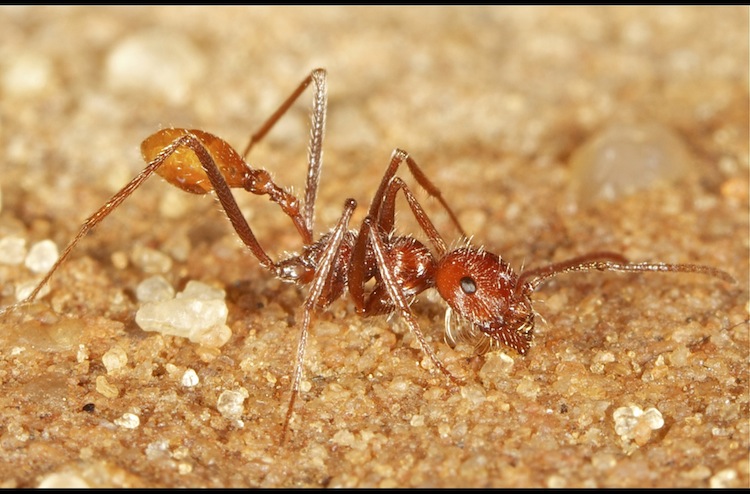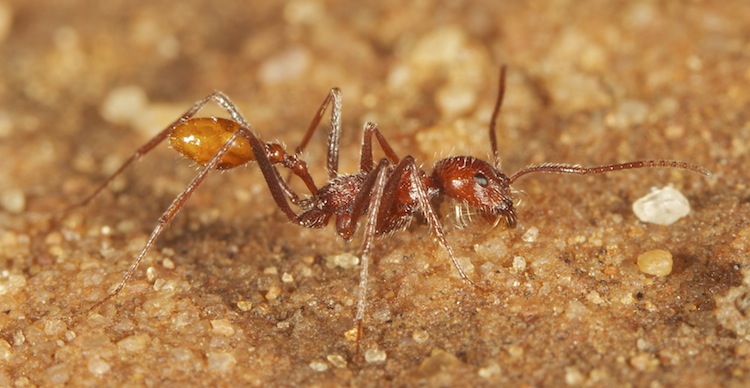The distribution for O. machadoi is way off...
Olios machadoi Lawrence, 1952 Distribution in South Africa: Eastern Cape: Mkambati Nature Reserve (31.31; 29.97). KwaZulu- Natal: Kosi Bay Nature Reserve (-26.93, 32.87); Ndumo Game Reserve (-26.87, 32.24); Pietermaritz- burg (-29.6, 30.38)*; Tembe Elephant Park (-26.94, 32.47). Mpumalanga: Kaapsehoop (-25.56, 30.78); Kruger National Park (-24.98, 31.58); Sabi Sands, Londolozi (-24.87, 31.47). Western Cape: Gamkaberg Nature Reserve (-33.31, 21.71). Habitat (biome): GB, NKB, SB. Records from protected areas: 7. Records from agro-ecosystems: 0. Known distribution: South Africa*. Conservation status: endemicity: 3; abundance: 1[4]. Taxonomic status: 1.
The only 2 Olios species from anywhere near the Kalahari that I see are :
Olios correvoni Lessert, 1921 Distribution in South Africa: Eastern Cape: Breakfast Vlei, above Kwancukunca stream (-33.08, 26.95); Middelburg (-31.49, 24.99); Mkambati Nature Reserve (31.31; 29.97). Free State: Amanzi Pri- vate Game Reserve (-28.62, 26.68); Bloemfontein (Farm Deelhoek) (-29.11, 26.22). Gauteng: Pretoria/ Tshwane: Brooklyn (-25.77, 28.24), Moreleta Park (-25.81, 28.29). KwaZulu-Natal: Bonamanzi Nature Reserve (-28.02, 32.28); Ithala Nature Reserve (Doornkraal Camp) (-27.51, 31.23); Ndumo Game Re- serve (Crocodile Farm) (-26.87, 32.24); iSimangaliso Wetland Park: Sodwana Bay National Park (Forest Station) (-27.4, 32.76). Limpopo: Blouberg Nature Reserve (-22.99, 29.04); Lajuma Mountain Retreat (-23.03, 29.45); Little Leigh (Western Soutpansberg) (-22.95, 29.87); Nylsvley Nature Reserve (-24.65, 28.67). Mpumalanga: Kruger National Park (Skukuza Camp) (-25.00, 31.97). North West: Barberspan (-26.62, 25.58); Swartbooisdrift, Black Rock (-25.27, 28.13). Northern Cape: Augrabies National Park (-28.53, 20.29). Western Cape: Botrivier (-34.21, 19.2); Prince Albert (Tierberg) (-33.22, 22.03). Habitat (biome): FB, GB, NKB, SB. Records from protected areas: 11. Records from agro-ecosystems: 0. Known distribution: Botswana, Mozambique, Namibia, South Africa. Conservation status: endemicity: 2; abundance: 1 [3]. Taxonomic status: 1.
and
Olios sherwoodi Lessert, 1929 Distribution in South Africa: Northern Cape: Augrabies National Park (-28.53, 20.29). Habitat (biome): NKB. Records from protected areas: 0. Records from agro-ecosystems: 0. Known distribution: Congo Republic*, South Africa. Conservation status: endemicity: 1; abundance: 3 [4]. Taxonomic status: 1.
Insect or Invertebrates Identification - DONE
Moderator: Klipspringer
Re: Insect or Invertebrates Identification
Olios correvoni is obvioulsy everywhere (also in Namibia)  and habitat is savanna
and habitat is savanna
but there are too many Olios, that's why I think it's a Olios sp. only - perhaps only a possibly Olios
The distribution in the spider atlas is also not too reliable, based on only few sightings
there might be also unidentified species
but there are too many Olios, that's why I think it's a Olios sp. only - perhaps only a possibly Olios
The distribution in the spider atlas is also not too reliable, based on only few sightings
there might be also unidentified species
Re: Insect or Invertebrates Identification
Re: Insect or Invertebrates Identification
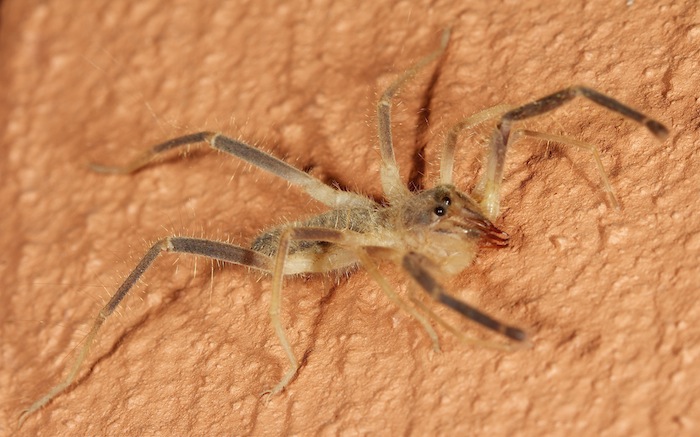
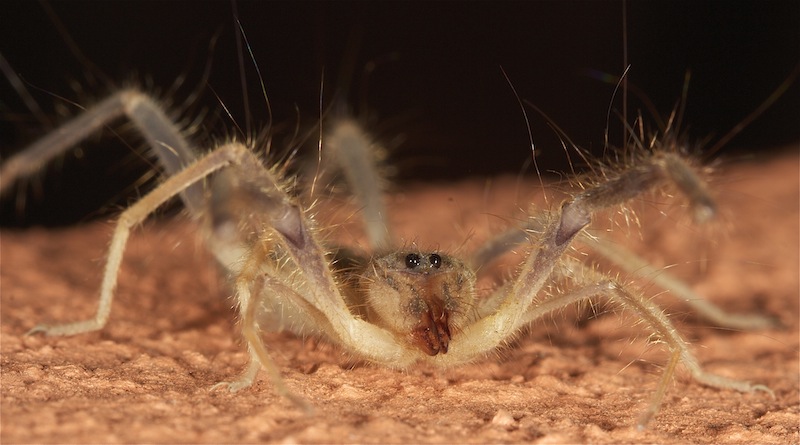
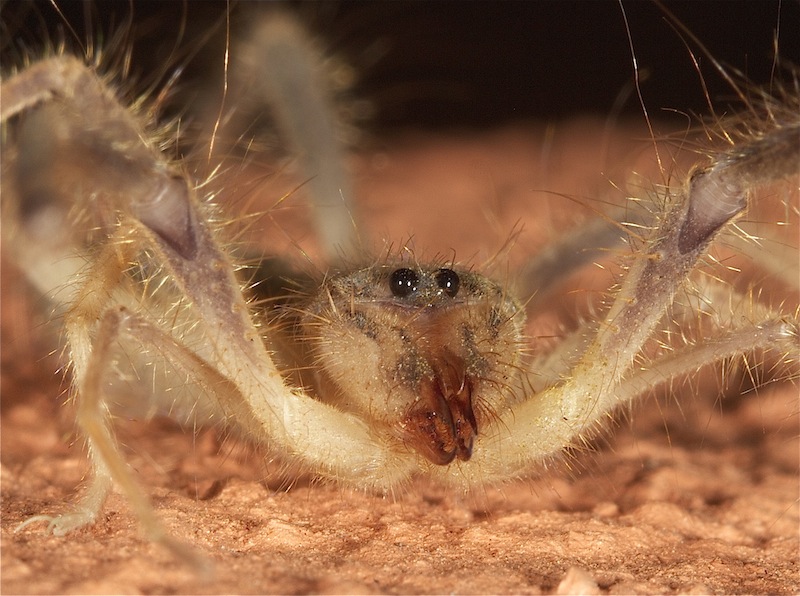
KTP
Ogre-faced spider Family Deinopidae
I want it to be this one just because I like the name
Re: Insect or Invertebrates Identification
No luck for you, IMO, ExFmem 
8 legs + huge pedipalps makes it a solifuge
Solifugae (sun-spiders) of the national parks and reserves of South Africa (Arachnida, Solifugae)
The Arachnid Fauna of the Kalahari Gemsbok National Park Part 1 A revision of the species of "Mole Solifuges" of the genus cheltpus purcell, 1901 (family hexisopodidae)
Don't think we can ID based on the very little info I find
And we need a new book for this
8 legs + huge pedipalps makes it a solifuge
Solifugae (sun-spiders) of the national parks and reserves of South Africa (Arachnida, Solifugae)
The Arachnid Fauna of the Kalahari Gemsbok National Park Part 1 A revision of the species of "Mole Solifuges" of the genus cheltpus purcell, 1901 (family hexisopodidae)
Don't think we can ID based on the very little info I find
And we need a new book for this
Re: Insect or Invertebrates Identification
That's even cooler  than an ogre-faced spider. Thanks, Toko.
than an ogre-faced spider. Thanks, Toko. 
Guess I can enter it as a generic "Solifuge" , or better to just let it slide for now
, or better to just let it slide for now 
Guess I can enter it as a generic "Solifuge"
Re: Insect or Invertebrates Identification
You must start a new book, ExFmem  these are not spiders
these are not spiders 
and then we can add this one, too from Tina's TT
https://africawild-forum.com/viewtopic.p ... 98#p199598

Edit: Brandnew book here, for you, ExFmem
https://africawild-forum.com/viewtopic.p ... 41#p199941
and then we can add this one, too from Tina's TT
https://africawild-forum.com/viewtopic.p ... 98#p199598
Edit: Brandnew book here, for you, ExFmem
https://africawild-forum.com/viewtopic.p ... 41#p199941
Re: Insect or Invertebrates Identification
Yes, I know they are not spiders, as I have a pic of one a few years back and looked it up....however, 

 I did not pick up that this was also one, so for that reason it's WAY cooler
I did not pick up that this was also one, so for that reason it's WAY cooler  than being a "mere" spider.
than being a "mere" spider.
Does that make me an "Order-ist"?
Definitely NOT a Hexisopodidae/Chelypus that are listed for the Kalahari
Chelypus is a genus of slow-moving, burrowing sunspiders confined to the deserts and arid regions of Southern Africa. The known species of the family Hexisopodidae are from two genera - Chelypus with 6 species and Hexisopus with 15 species. They are readily separated from other members of the Solifugae by an ABSENCE of claws on the fourth pair of legs. Both Hexisopus and Chelypus spend a large part of their existence underground, so that their 2nd, 3rd and particularly the 4th pair of legs, are shortened and robust, and equipped with rake-like spines for digging.
Other than that, the fact that both Biton and Blossia (found in the KTP) are members of the Daesiidae, I get nowhere, as you suggested.
Question, you have offered introductory sections for many of the Arachnids, so would it be more appropriate to do that here as well, rather than in the body of a post that is quite vague as far as ID? If so, I can do the "general info" post (from http://www.biodiversityexplorer.org/ara ... olifugids/ and you edit it as you see fit, then post the specific pics w/out too much further info.
If so, I can do the "general info" post (from http://www.biodiversityexplorer.org/ara ... olifugids/ and you edit it as you see fit, then post the specific pics w/out too much further info.
Thoughts please.
Does that make me an "Order-ist"?
Definitely NOT a Hexisopodidae/Chelypus that are listed for the Kalahari
Chelypus is a genus of slow-moving, burrowing sunspiders confined to the deserts and arid regions of Southern Africa. The known species of the family Hexisopodidae are from two genera - Chelypus with 6 species and Hexisopus with 15 species. They are readily separated from other members of the Solifugae by an ABSENCE of claws on the fourth pair of legs. Both Hexisopus and Chelypus spend a large part of their existence underground, so that their 2nd, 3rd and particularly the 4th pair of legs, are shortened and robust, and equipped with rake-like spines for digging.
Other than that, the fact that both Biton and Blossia (found in the KTP) are members of the Daesiidae, I get nowhere, as you suggested.
Question, you have offered introductory sections for many of the Arachnids, so would it be more appropriate to do that here as well, rather than in the body of a post that is quite vague as far as ID?
Thoughts please.
Re: Insect or Invertebrates Identification
Super!ExFmem wrote:
Question, you have offered introductory sections for many of the Arachnids, so would it be more appropriate to do that here as well, rather than in the body of a post that is quite vague as far as ID?If so, I can do the "general info" post (from http://www.biodiversityexplorer.org/ara ... olifugids/ and you edit it as you see fit, then post the specific pics w/out too much further info.
Thoughts please.




